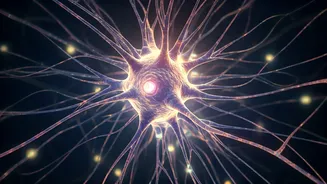The Reel's Allure
Social media reels, with their rapid-fire format, are designed to grab attention. The quick succession of videos, often accompanied by catchy music and
visual effects, triggers the brain's reward system. This constant stimulation releases dopamine, a neurotransmitter associated with pleasure and motivation, creating a cycle of seeking and consuming content. The short duration of reels makes them easily accessible and encourages continuous viewing. The algorithm learns your preferences and keeps delivering more of what you like, making it difficult to stop scrolling. This design, while successful in keeping users engaged, can contribute to addictive behavior as individuals crave the next video hit.
Brain's Reward System
The brain's reward system, which involves areas like the ventral tegmental area and the nucleus accumbens, is crucial in understanding the addictive potential of reels. When we experience something pleasurable, such as watching an engaging reel, this system is activated. Dopamine is released, reinforcing the behavior. The brain associates the reel with pleasure and encourages us to repeat the action. The constant flow of new content and the anticipation of seeing something exciting further fuels this cycle. Over time, the brain can adapt, requiring more and more stimulation to achieve the same level of satisfaction, contributing to the development of an addiction.
Risky Behaviors Unveiled
The addictive nature of reels has led to alarming real-world consequences, exemplified by instances of distracted driving. Stories of drivers, like the auto-rickshaw driver mentioned, engrossed in their phones while navigating roads highlight the dangers. This behavior significantly increases the risk of accidents. Focusing on reels takes attention away from the road, impairs reaction times, and reduces situational awareness. The preoccupation with online content can override safety concerns, placing both the driver and others in peril. The incident highlighted the immediate danger and underscored the urgent need for responsible social media usage.
Preventing Addiction
Breaking free from reel addiction requires a multi-pronged approach. Firstly, conscious awareness of the problem is essential. Recognizing the time spent on reels and the impact on daily life is the first step. Setting time limits is a practical approach. Utilizing app features or setting personal reminders can help regulate reel consumption. Cultivating alternative interests and activities is critical. Engaging in hobbies, spending time with loved ones, or pursuing physical exercise can help shift focus away from the digital world. Developing mindfulness practices and being present in the moment can enhance self-control. Encouraging a culture of digital responsibility will go a long way in cultivating healthy habits.
Mindful Social Media
Promoting responsible social media usage is crucial in mitigating the potential harms of reel addiction. This involves a critical approach to content consumption. Being mindful of the types of content watched and the effect it has on emotions and well-being is vital. Regularly assessing digital habits, including the time spent on reels and the potential impact on focus, productivity, and relationships is essential. Avoiding the use of reels in contexts where attention is paramount, such as while driving, is a key safety measure. Educating people, particularly younger users, about the dangers of excessive screen time and the addictive algorithms of social media platforms could go a long way in promoting a healthier digital lifestyle.











